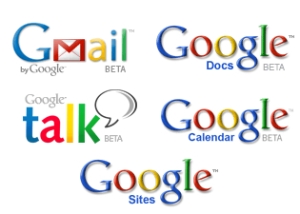When people hear the word “beta” they instantly think of a new or incomplete application that is buggy, unstable and experiences frequent crashes. However quite the opposite can be the truth in many cases, and “beta” isn’t always a bad thing. So much so is this, that some Web 2.0 applications have the ability to opt into “perpetual beta”, and more than likely most everyday users won’t even notice their favorite apps are in fact constantly in beta.
In simple terms, the “Perpetual Beta” pattern by O’Reilly refers to an application or piece of software that remains in constant development and although the application may still contain all complete features, and minimal bugs present, new features and updates are regularly been applied.
According to O’Reilly, when it comes to Web 2.0,
“The users must be treated as co-developers”, thus, “the product is developed in the open with new features slipstreamed in on a monthly, weekly or even daily basis.”
While many users associate software updates with those annoying popup messages on the bottom of the screen, telling us we have updates to be applied, some Web 2.0 applications can apply updates as frequently as every half hour without us even knowing.
 Web 2.0 has become such a crucial component of the Internet era that big companies such as Google have devised ways to update their services in order to enhance the user experience but also avoiding large updates and downtime. Simply by slapping a “Beta” label on a service or application they are essentially employing everyday users as real-time testers. Why do this?? Easy, because this allows them to receive feedback on flaws/bugs within the system that they may miss without real life users.
Web 2.0 has become such a crucial component of the Internet era that big companies such as Google have devised ways to update their services in order to enhance the user experience but also avoiding large updates and downtime. Simply by slapping a “Beta” label on a service or application they are essentially employing everyday users as real-time testers. Why do this?? Easy, because this allows them to receive feedback on flaws/bugs within the system that they may miss without real life users.
In the past “Perpetual Beta” was most commonly used by developers and tinkerers learning new skills and testing applications, which does have enormous advantages for reducing problems in the application. In recent years this has become quite common with large software companies such as Facebook and Twitter. The example I find particular interesting is Google which also uses “Perpetual beta” and has copped quite a lot of mixed opinions on the topic.
Pretty much every single application developed by Google over the years has been in a state of “Perpetual beta”, from Gmail, Google Apps and their Web Browser Google Chrome. Google’s Approach to leaving products in this testing phase has been advantageous in many ways, but also frustrating for some users, due to at times applications staying in beta for as long as 5 years.
“Analysts have dubbed Google’s approach “perpetual beta.” Under this strategy, Google launches early versions of new products to see what sticks with consumers. The problem is that some of these experiments aren’t sticking — especially when users have to pay for products”
No matter the gripes people may have with “Perpetual Beta” this method is here to stay and the old days of us traditionally buying software, installing it, and running it over and over again until we buy the next version, or an update was released are becoming less and less common. As the internet evolves, every time we visit a website we are downloading newly available updated content without even knowing so….





